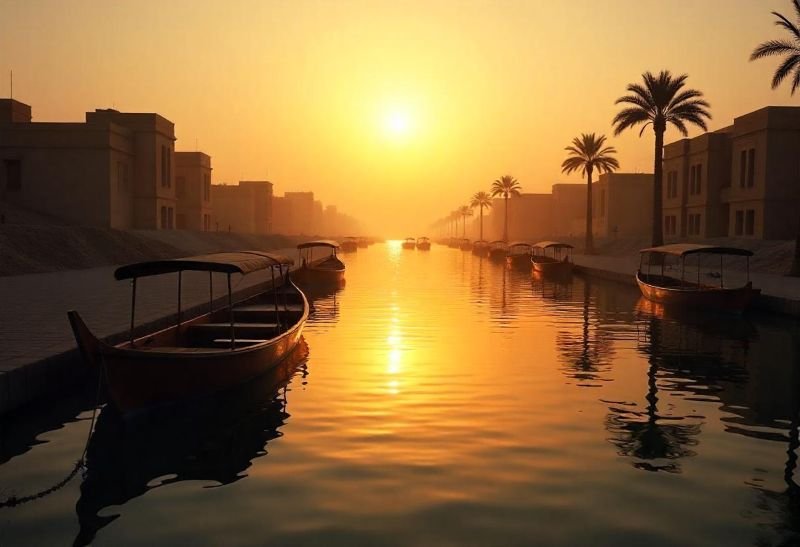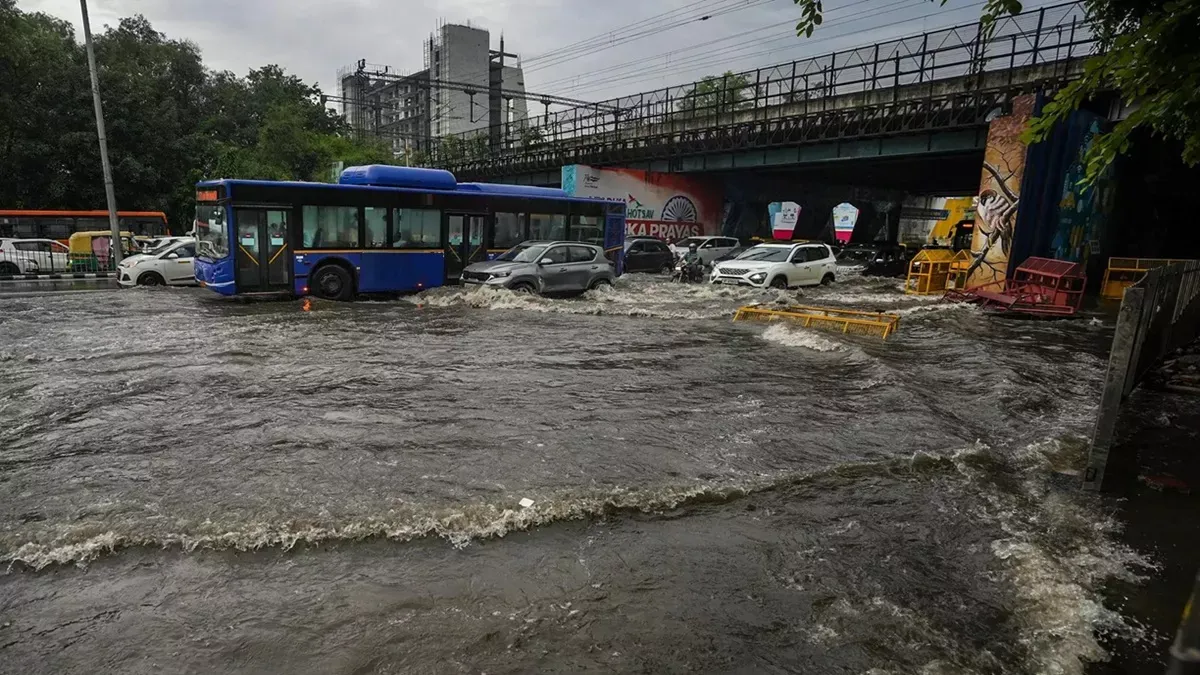Travel Guides & Articles
Now, Sharm And Hurghada Are Off Limits: Foreign Office Warns UK Tourists Of Travel Restrictions In Egypt As It Adds Seven Areas To The ‘No Travel’ List, Here Is All You Need To Know

Published on
July 13, 2025 |
By: TTW News Desk
The UK’s Foreign, Commonwealth & Development Office (FCDO) has issued an updated travel advisory for UK citizens thinking of travelling to Egypt, advising against all but essential travel in seven areas of the country. The new advice reflects growing fears for safety and security in the region – and is set to have huge implications for UK tourism in Egypt, one of the favoured holiday spots in North Africa.
The revised travel warning, covering regions close to the Libyan border and parts of North Sinai, lists specific areas that are now deemed too risky for holidaymakers. The decision is part of continuous safety measures due to political instability, local clashes and possible terrorist attacks. With the likes of popular tourist destinations such as Sharm el Sheikh being a hot-spots for UK holidaymakers, this new guidance is likely to have an effect on holiday bookings and visitor numbers, especially in the country’s historically rich areas.
FCDO Adds Seven Destinations to ‘No Travel’ List
The new FCDO warning details a range of areas in Egypt that holidaymakers should refrain from venturing to unless they need to travel there for essential purposes. These provinces were selected by due to their proximity to volatile areas near Egypt’s borders and also areas facing persistent security challenges. The seven areas on the ‘watch list’ are:
Egypt-Libya Border (20 km) : This location is considered to be at high risk of exposure due to its proximity to Libya, which has experienced political and security turbulence for years. Tourists are also told to shun the area, apart from necessary travel to the town of El Salloum, near the border, which is permitted subject to conditions.
North Sinai: The area has been a battleground for fighting between local militant factions. This remains a problem for overseas visitors, as parts of the Sinai Peninsula are still controlled by armed groups, making regular tourism unsafe.
Northern South Sinai: The FCDO advises against all travel to the northern area of the South Sinai region, except for the St Catherine’s Protectorate, Taba and Nuweibaa and the roads between these locations and the Taba and Nuweibaa border crossings and the Sharm el Sheikh International Airport. Security problems for these areas have been rife, particularly close to the borders.
Western Nile Valley & Nile Delta The region for the western Nile Valley & Nile Delta, with some exceptions, is on the FCDO’s travel advice list too. These parts of Egypt are known for political and security instability, and many foreign tourists visiting the region have been wary over recent years.
Coastal Areas Between the Nile Delta and Marsa Matruh: Portions of the west Nile Valley are currently off limits to travelers, but there are exceptions. Exception were made to the coast between the Nile Delta and Marsa Matruh, as well as to the Faiyum Governorate, non-essential travel is to be allowed to these areas, which are considered to be safer generally.
Siwa Oasis and the surrounding towns: Located near the Libyan border, the Siwa Oasis has historically been a popular tourist destination for its ancient history and picturesque desert vistas. Siwa and its neighbouring oasis towns, Bahariya, Farafra, Dakhla (Mut) and Kharga, are exceptions with the FCDO as they remain open to tourists.
Luxor, Qina, Aswan, Abu Simbel, and the Valley of the Kings: There are travelwarnings only in rare cases for specific areas in Egypt that are popular tourist destinations world-wide known for ancient Egyptian monuments and history. The FCDO has also clarified that these locations, as well as the Valley of the Kings and the classic temples of Abu Simbel, remain some of the country’s safest for visitors. These sites, which are one of Egypt’s leading tourist attractions, can continue to attract international visitors, especially those interested in the ancient history of Egypt.
Exemptions and Exceptions to the Travel Advisory
The travel advisory, updated on Tuesday, identifies a number of regions where no travel is permitted, but also identifies permitted tourist areas under conditions. The FCDO has stressed that many roads and towns are still open for travel, particularly in more stable areas. These include:
Roads linking the desert and the Nile Valley: Road links such as those between Kharga and Baris; Baris and Luxor; and Farafra, Dakhla (Mut) and Kharga will not be affected by the travel ban provided travelers follow the regulations for necessary travel.
Giza and the Bahariya Oasis: Giza, home of the Great Pyramids and an iconic tourist destination in Egypt, is still open to travelers. The roads between the Bahariya Oasis and Siwa are also open to travellers although the FCDO warning advocates caution.
Marsa Matruh-Siwa Road: The overland route connecting the oasis town of Siwa to Marsa Matruh on the Mediterranean coast remains open, but only for essential travel. That will allow visitors to experience Siwa, an important stop on the circuit for travelers interested in the desert landscapes and vestiges of ancient Egypt.
Impact on Tourism in Egypt Profile
Egypt is known for its pyramids, history of civilization and popular tourist destinations including city state such as Cairo, Giza, etc. The FCDO’s new travel advice may have a major impact on tourism in Egypt. For such measures as the travel ban are now in evidence, and prospective travellers may think twice, especially to places that have now been designated as high risk zones. Egypt has long drawn tourists from the UK keen to visit its iconic sites – including the Pyramids of Giza and temples of Luxor – or relax in the resorts on the Red Sea.
Tourism is an economic lifeline for Egypt and the revised travel advice could affect the flow of visitors, particularly in the affected areas. But a number of museums around temple areas are still open, and visitors also flock to the nation’s coastal Mediterranean towns as well as to Luxor and Aswan, where little of the unrest has been felt.
And if Siwa Oasis, one of the country’s relatively off-the-beaten-path destination, can make it on the excluded list, that means that Egypt will do anything to pimp its tours. The government can also concentrate its efforts on making key tourist spots safer and more secure, to keep the interest of foreign tourists in the country.
New Rules to Be Aware for Tourists
UK holidaymakers heading to Egypt should be aware of the latest FCDO advice and be prepared to change their travel plans. Visitors to the country also need to keep up to date with how safe certain regions are, particularly if they are planning on visiting the Sinai Peninsular or the region that borders Libya.
Travelers should also monitor potential shifts in the security environment, as the status of the country is still in flux due to continued challenges. But it is not a wild west free-for-all – checking the foreign office advice before you go, keeping in contact with local authorities and heeding advice on the ground will all be essential to a safe and enjoyable visit.
Conclusion: Egypt Tourism on the Move
Although travel in some parts of Egypt is not recommended by the FCDO, tourism in the country is alive and well and appealing to visitors from across the globe. From the classic sites such as the iconic Valley of the Kings and Abu Simbel, to the government’s commitment to make these areas safe to visit, Egypt continues to represent a unique cultural experience for visitors. As Egypt deals with security demands and raises its profile to remain a top attraction in world tourism, tourists are invited to follow developments and keep tabs on travel advisories to enjoy a safe and pleasant visit.
Tags: Aswan, Cairo, Egypt tourism, Giza, luxor, Mediterranean coast, Middle East Tourism, Nile Valley, north sinai, Sinai Peninsula, Siwa Oasis
Travel Guides & Articles
These Are The Best Whale Watching Spots In India – Travel and Leisure Asia

These Are The Best Whale Watching Spots In India Travel and Leisure Asia
Source link
Travel Guides & Articles
6 offbeat train stops across India that every train lover must explore

There is something about railway stations that most train lovers will swear by. The sight of the crowds, tea vendors buzzing through the platforms with steaming chai and samosa, the rhythmic sound of wheels against the tracks, and the distant whistle of an approaching train, all come together to make that place uniquely lively. It’s a place where journeys begin, end, and sometimes linger in memory long after the train has departed.
Then there are hidden gems, offbeat stops that tell stories of landscapes, history, and local life, which go beyond the busy junctions and metropolitan stations. These offbeat train stops are like windows into the country’s other unknown side. Whether it’s witnessing a waterfall beside a railway track in Goa, starting a UNESCO-listed mountain train journey in Tamil Nadu, or experiencing the highest broad-gauge station in Andhra Pradesh, these stations promise travelers an adventure unlike any other. For railway enthusiasts, history buffs, and curious explorers alike, these offbeat train stops across India are destinations in their own right, and must be explored whenever given a chance.
Travel Guides & Articles
Heavy Rains Lash Gurugram, Noida, Ghaziabad; Schools, Offices Closed, Airlines Issue Travel Advisory

Delhi-NCR Weather: The India Meteorological Department (IMD) has issued a heavy rainfall alert for Delhi-NCR, including Noida, Gurugram, and Ghaziabad, as relentless monsoon showers continue to lash northern India. Today’s weather forecast for Delhi warns of intense downpours throughout the day.
02/09/2025: 05:25 IST; Light to moderate rainfall is very likely to occur at Barwala, Jind, Mahendargarh, Rewari, Narnaul, Bawal, Nuh (Haryana) Saharanpur, Deoband, Muzaffarnagar, Bijnaur, Pilakhua, Hapur, Gulaoti, Sikandrabad, Bulandshahar, Shikarpur, Pahasu (U.P.) Bhiwari,
— RWFC New Delhi (@RWFC_ND) September 1, 2025
In Gurugram, heavy rains have triggered severe waterlogging and massive traffic jams, with reports of a 7-kilometre-long traffic snarl. The District Disaster Management Authority (DDMA) has issued an orange alert for the city, advising the closure of all schools, colleges, and offices, and encouraging work-from-home arrangements.
Meanwhile, Noida and Ghaziabad are also experiencing heavy rainfall. The IMD’s weather alert extends to Himachal Pradesh and Uttarakhand, where a red alert has been issued due to the risk of flash floods and extremely heavy rainfall. Punjab and Jammu & Kashmir remain under an orange warning. As per today’s forecast, schools and offices in affected regions are expected to remain closed to ensure public safety.
Travel Advisory
🚧⛈Heads up, #Delhi travellers!
Due to today’s downpour, several roads across #Delhi are currently blocked or experiencing slow movement.
Please allow extra time, take an alternate route if possible, and check your flight status on our website or app before…
— IndiGo (@IndiGo6E) September 1, 2025
Air India also issued a passenger advisory: ” Rain may impact flight operations to and from Delhi today. Please check your flight status here https://airindia.com/in/en/manage/flight-status.html before heading to the airport and allow extra time for your journey to the airport.”
Rain may impact flight operations to and from Delhi today.
Please check your flight status here https://t.co/5vemTROi62 before heading to the airport and allow extra time for your journey to the airport.
— Air India (@airindia) September 1, 2025
Delhi-NCR Rains: Avoid These Routes In Gurugram
Many parts of Gurugram experienced severe waterlogging on Monday following hours of continuous rain. Commuters reported flooding at major junctions including Hero Honda Chowk, Sohna Road, Narsinghpur stretch on NH-48, IFFCO Chowk, and Sectors 29 and 31. Traffic crawled along Golf Course Road and MG Road due to knee-deep water. Authorities have urged residents to avoid flood-prone areas during peak hours and to opt for alternate routes or work-from-home options where possible.
Delhi-NCR Rains: Are Schools, Offices Open In Gurugram Today?
Gurugram recorded over 100 mm of rainfall between 3 PM and 7 PM on September 1. In response to IMD’s orange alert, the District Disaster Management Authority has directed the closure of all offices on Tuesday (September 2), advising businesses to allow employees to work from home.
#Advisory – District Disaster Management Authority, Gurugram ⚠️
🌧️ Gurugram recorded over 100 mm of rainfall today (01 Sept, 3 PM – 7 PM).
📢 IMD Forecast: Orange Alert – Heavy to Very Heavy Rainfall on 02 Sept 2025.👉 Instructions issued:
All corporate & private offices in… pic.twitter.com/0XoVqXdbEJ
— DIPRO Gurugram (@diprogurugram1) September 1, 2025
All schools in the district have also been advised to conduct online classes on Tuesday, September 2, 2025.
-

 Business4 days ago
Business4 days agoThe Guardian view on Trump and the Fed: independence is no substitute for accountability | Editorial
-
Tools & Platforms3 weeks ago
Building Trust in Military AI Starts with Opening the Black Box – War on the Rocks
-

 Ethics & Policy1 month ago
Ethics & Policy1 month agoSDAIA Supports Saudi Arabia’s Leadership in Shaping Global AI Ethics, Policy, and Research – وكالة الأنباء السعودية
-

 Events & Conferences3 months ago
Events & Conferences3 months agoJourney to 1000 models: Scaling Instagram’s recommendation system
-

 Jobs & Careers2 months ago
Jobs & Careers2 months agoMumbai-based Perplexity Alternative Has 60k+ Users Without Funding
-

 Funding & Business2 months ago
Funding & Business2 months agoKayak and Expedia race to build AI travel agents that turn social posts into itineraries
-

 Education2 months ago
Education2 months agoVEX Robotics launches AI-powered classroom robotics system
-

 Podcasts & Talks2 months ago
Podcasts & Talks2 months agoHappy 4th of July! 🎆 Made with Veo 3 in Gemini
-

 Education2 months ago
Education2 months agoAERDF highlights the latest PreK-12 discoveries and inventions
-

 Mergers & Acquisitions2 months ago
Mergers & Acquisitions2 months agoDonald Trump suggests US government review subsidies to Elon Musk’s companies

















